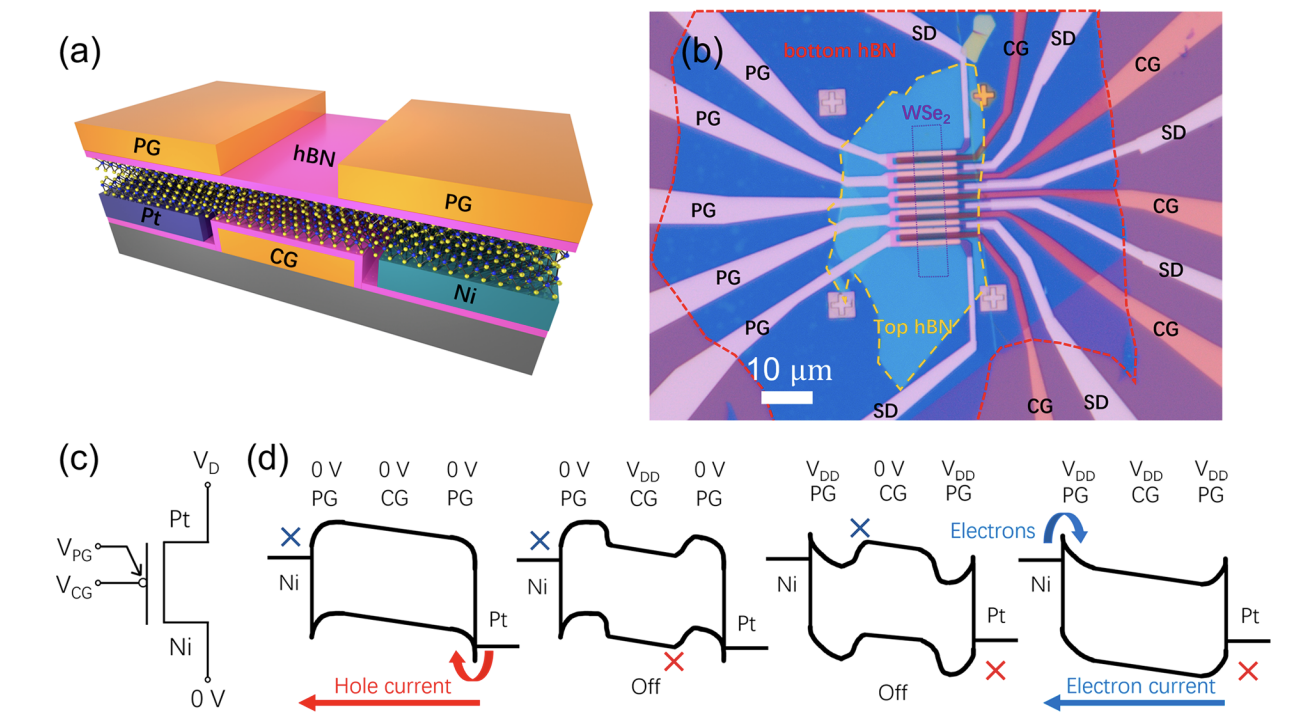Research Highlights

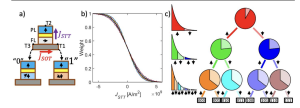
Perpendicular magnetic tunnel junction (pMTJ)-based true-random number generators (RNGs) can consume orders of magnitude less energy per bit than CMOS pseudo-RNGs. Here, we numerically investigate with a macrospin Landau–Lifshitz-Gilbert equation solver the use of pMTJs driven by spin–orbit torque to directly sample numbers from arbitrary probability distributions with the help of a tunable probability tree. The tree operates by dynamically biasing sequences of pMTJ relaxation events, called ‘coinflips’, via an additional applied spin-transfertorque current. Specifically, using a single, ideal pMTJ device we successfully draw integer samples on the interval [0, 255] from an exponential distribution based on p-value distribution analysis. In order to investigate device-to-device variations, the thermal stability of the pMTJs are varied based on manufactured device data. It is found that while repeatedly using a varied device inhibits ability to recover the probability distribution, the device variations average out when considering the entire set of devices as a ‘bucket’ to agnostically draw random numbers from. Further, it is noted that the device variations most significantly impact the highest level of the probability tree, with diminishing errors at lower levels. The devices are then used to draw both uniformly and exponentially distributed numbers for the Monte Carlo computation of a problem from particle transport, showing excellent data fit with the analytical solution. Finally, the devices are benchmarked against CMOS and memristor RNGs, showing faster bit generation and significantly lower energy use.
Find the link here: https://doi.org/10.1088/1361-6528/ad3b01

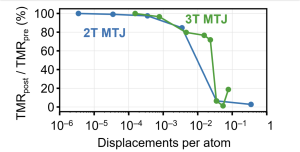
Domain-wall magnetic tunnel junctions (MTJs) are a new spintronic device family that may be exploited in resilient edge logic processors or neuromorphic edge accelerators in the future. Here, domain-wall MTJ logic devices were exposed to large total ionizing doses (TIDs), heavy ion displacement damage, or both. The parts demonstrated complete resilience to the ionizing radiation, but ion-irradiated parts followed a similar degradation curve to previously tested tunnel junction parts in response to heavy ion irradiation. Microscopy and spectroscopy methods confirm significant damage in some devices.
Find the link here: https://doi.org/10.1109/TNS.2023.3333819


In the ‘Beyond Moore’s Law’ era, with increasing edge intelligence, domain-specific computing embracing unconventional approaches will become increasingly prevalent. At the same time, adopting a variety of nanotechnologies will offer benefits in energy cost, computational speed, reduced footprint, cyber resilience, and processing power. The time is ripe for a roadmap for unconventional computing with nanotechnologies to guide future research, and this collection aims to fill that need. The authors provide a comprehensive roadmap for neuromorphic computing using electron spins, memristive devices, two-dimensional nanomaterials, nanomagnets, and various dynamical systems. They also address other paradigms such as Ising machines, Bayesian inference engines, probabilistic computing with p-bits, processing in memory, quantum memories and algorithms, computing with skyrmions and spin waves, and brain-inspired computing for incremental learning and problem-solving in severely resource-constrained environments. These approaches have advantages over traditional Boolean computing based on von Neumann architecture. As the computational requirements for artificial intelligence grow 50 times faster than Moore’s Law for electronics, more unconventional approaches to computing and signal processing will appear on the horizon, and this roadmap will help identify future needs and challenges. In a very fertile field, experts in the field aim to present some of the dominant and most promising technologies for unconventional computing that will be around for some time to come. Within a holistic approach, the goal is to provide pathways for solidifying the field and guiding future impactful discoveries.
Find the link here: https://iopscience.iop.org/article/10.1088/2399-1984/ad299a

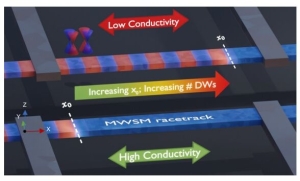
In this paper, we study the electronic structure of a helically magnetized magnetic Weyl semimetal and propose a multistate memory device utilizing the transport in such a magnetic superlattice. For both Bloch- and Néel-type spiral magnetic textures, we report magnetization-tunable flat bands in the superlattice direction via the onset of bulk axial Landau levels (LLs), find the analytic zeroth axial LL wave functions and energy spectrum of both systems, and determine a condition for band flattening. We show that both Bloch- and Néel-type devices using this electronic structure have application in neuromorphic memristive devices and do not rely on the topology or spin polarization of the contacts, with Bloch-type devices allowing for an additional chirality filtering for next-generation computing and memory.
Find the link here: https://journals.aps.org/prb/abstract/10.1103/PhysRevB.109.115159

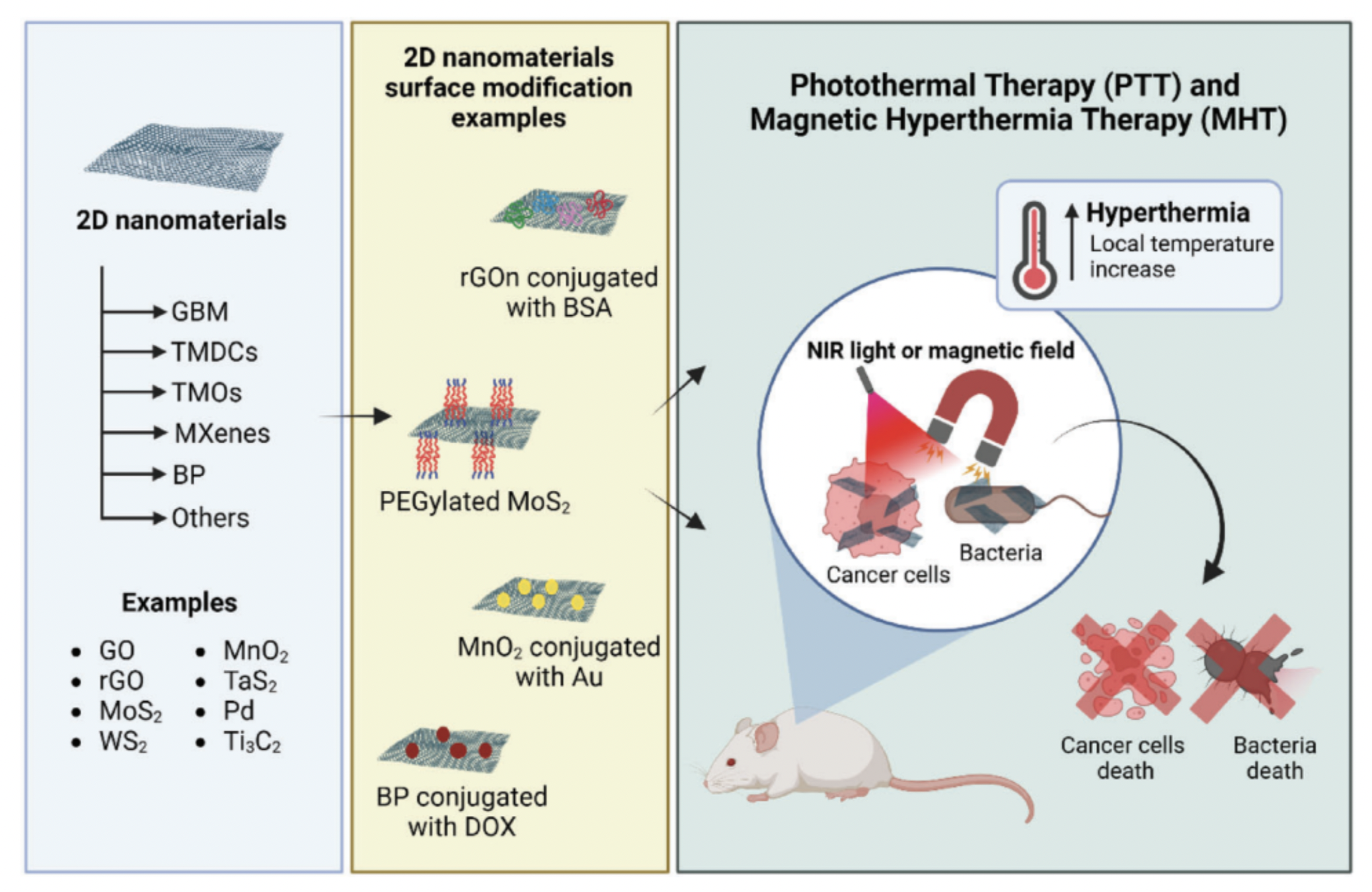
Photothermal therapy (PTT) and magnetic hyperthermia therapy (MHT) using 2D nanomaterials (2DnMat) have recently emerged as promising alternative treatments for cancer and bacterial infections, both important global health challenges. The present review intends to provide not only a comprehensive overview, but also an integrative approach of the state-of-the-art knowledge on 2DnMat for PTT and MHT of cancer and infections. High surface area, high extinction coefficient in near-infra-red (NIR) region, responsiveness to external stimuli like magnetic fields, and the endless possibilities of surface functionalization, make 2DnMat ideal platforms for PTT and MHT. Most of these materials are biocompatible with mammalian cells, presenting some cytotoxicity against bacteria. However, each material must be comprehensively characterized physiochemically and biologically, since small variations can have significant biological impact. Highly efficient and selective in vitro and in vivo PTTs for the treatment of cancer and infections are reported, using a wide range of 2DnMat concentrations and incubation times. MHT is described to be more effective against bacterial infections than against cancer therapy. Despite the promising results attained, some challenges remain, such as improving 2DnMat conjugation with drugs, understanding their in vivo biodegradation, and refining the evaluation criteria to measure PTT or MHT effects.
Find the link here: https://doi.org/10.1002/smll.202306137

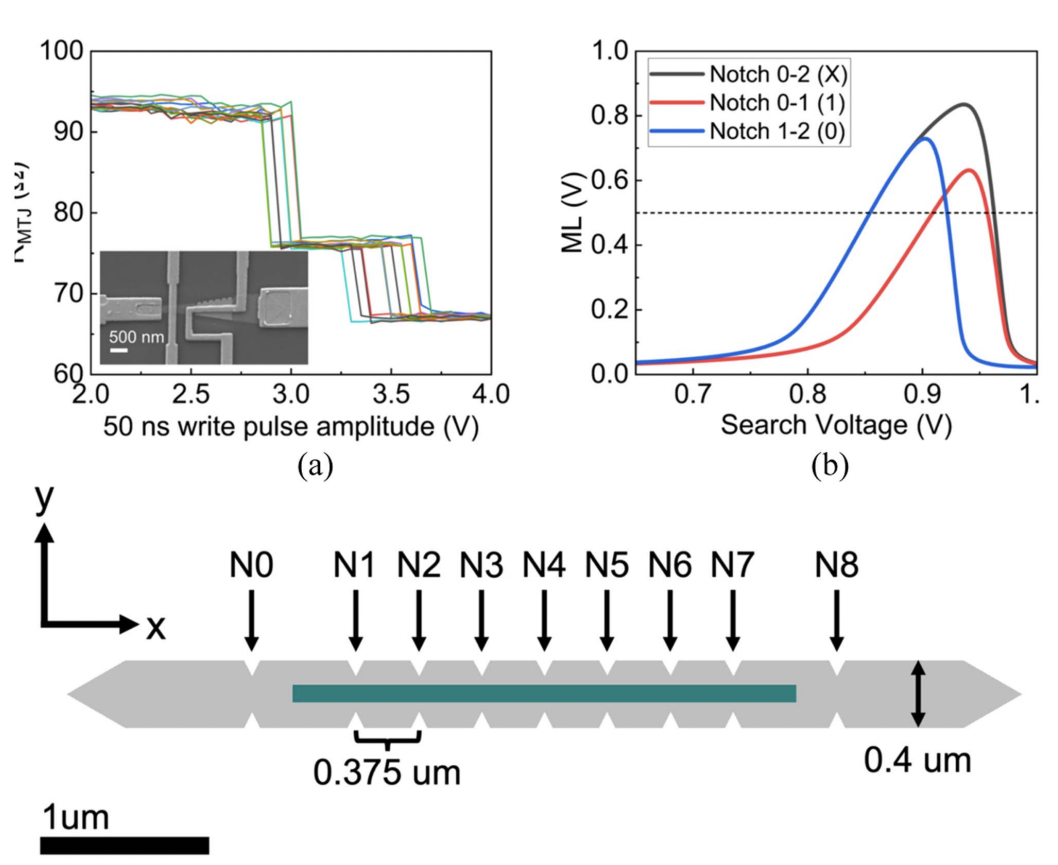
With the rise in in-memory computing architectures to reduce the compute-memory bottleneck, a new bottleneck is present between analog and digital conversion. Analog contentaddressable memories (ACAM) are being recently studied for in-memory computing to efficiently convert between analog and digital signals. Magnetic memory elements such as magnetic tunnel junctions (MTJs) could be useful for ACAM due to their low read/write energy and high endurance, but MTJs are usually restricted to digital values. The spin orbit torque-driven domain wall-magnetic tunnel junction (DW-MTJ) has been recently shown to have multi-bit function. Here, an ACAM circuit is studied that uses two domain wall-magnetic tunnel junctions (DW-MTJs) as the analog storage elements. Prototype DW-MTJ data is input into the magnetic ACAM (MACAM) circuit simulation, showing ternary CAM function. Device-circuit co-design is carried out, showing that 8-10 weight bits are achievable, and that designing asymmetrical spacing of the available DW positions in the device leads to evenly spaced ACAM search bounds. Analyzing available spin orbit torque materials shows platinum provides the largest MACAM search bound while still allowing spin orbit torque domain wall motion, and that the circuit is optimized with minimized MTJ resistance, minimized spin orbit torque material resistance, and maximized tunnel magnetoresistance. These results show the feasibility of using DW-MTJs for MACAM and provide design parameters.
Find the link here: https://doi.org/10.1109/TNANO.2023.3343667

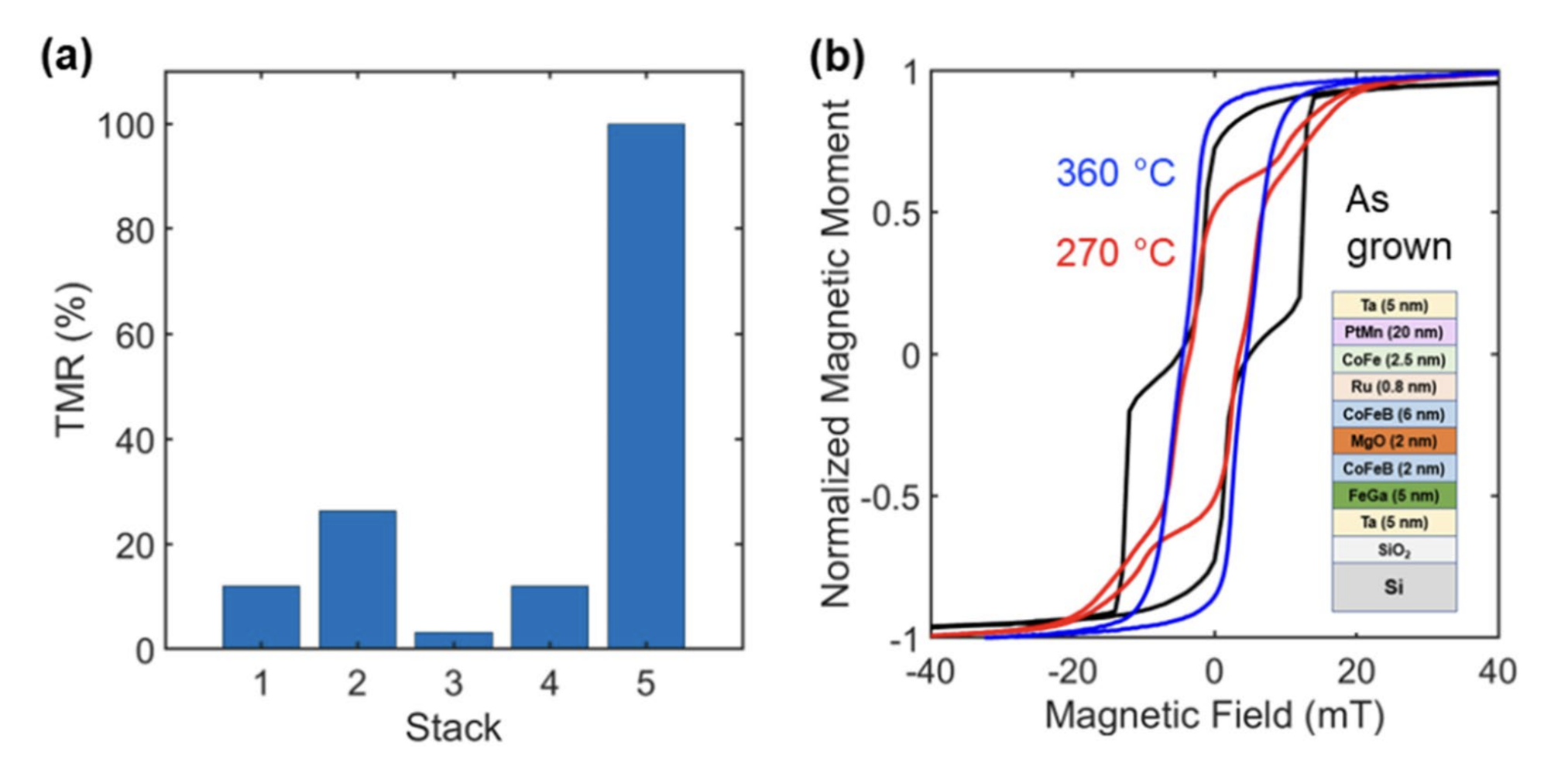
Mechanical strain provides a knob for controlling the magnetization of the magnetostrictive-free layer of magnetic tunnel junctions (MTJs), with many applications for energy-efcient memory and computing. This requires integrating materials with high magnetostriction coefcient into MTJs, while still preserving the CoFeB-MgO tunnel barrier for high tunnel magnetoresistance (TMR). One way to accomplish this is to replace the CoFeB free layer of the MTJ with an exchange-coupled bilayer of CoFeB and a highly magnetostrictive ferromagnet like Galfenol (FeGa). Here, FeGa, a thermally stable magnetostrictive material, is integrated into CoFeB-based MTJs. We show that engineering a thin layer of CoFeB and FeGa provides a means of controlling the magnetic properties and switching feld in FeGa-based MTJs, and that the exchange-coupled FeGa-CoFeB layer can be used as both a free layer and a fxed layer in the MTJ stack with TMR as high as 100%.
Find the link here: https://doi.org/10.1557/s43578-023-01226-z

